Archives of Community Medicine and Public Health
Adopting proactive results by developing the Shrewd model of pandemic COVID-19
Shahzad Ashraf1* , Zeeshan Rasheed2 and Muhammad Arbaz1
2Mir Chakar Khan Rind University Sibi, Pakistan
Cite this as
Ashraf S, Rasheed Z, Arbaz M (2022) Adopting proactive results by developing the Shrewd model of pandemic COVID-19. Arch Community Med Public Health 8(2): 062-067. DOI: 10.17352/2455-5479.000175Copyright License
© 2022 Ashraf S, et al. This is an open-access article distributed under the terms of the Creative Commons Attribution License, which permits unrestricted use, distribution, and reproduction in any medium, provided the original author and source are credited.The unavoidable pandemic situation seems uncontrolled over the past two years. In this aggravated situation, it seems crucial to take inescapable measures to deal with such a defiant disease and it is only possible if the actual pandemic propagation ratio is to be acquainted. Therefore, a shrewd pandemic model is being developed that will generate real-time infection statistics on an hourly, weekly, and monthly basis. This shrewd model utilizes the well-known dataset and when this dataset will be applied to determine the status of three types of infection the number of infected people, the time when the pandemic begins, and the time when the pandemic disappears. The time-based results are generated by conducting simulation in python Simpy framework and the generated results are the hallmark of real-time infection spreading ratio it shows that when the extraordinary measures for infection ratio are indispensable and when it becomes plausible.
Introduction
When a pathogen is transferred directly between hosts or indirectly through the environment or intermediate hosts, epidemics of infectious diseases in humans and other animals develop. The efficacy of transmission is determined by the infectiousness of the infected host (or hosts) and the susceptibility of uninfected individuals who are exposed to infection. Infectiousness is influenced by biological, behavioral, and environmental variables [1].
Every hour counts in the realm of epidemics, and there is a strong need to foresee the disease’s temporal evolution in order to determine the best approach to deal with it and create proper control of its spread. Recently, the pandemic COVID-19 has been rapidly spreading over the world, and its impact on our life, in general, is unavoidable [2-4]. Because of advances in computing, electronic data management, the capacity to share and deposit data through the internet, and rapid diagnostic tests and genetic sequence analysis, precise electronic surveillance of infectious diseases has become ubiquitous in recent years. Biological infectiousness is determined by infectious pathogen excretion and can refer to viral or bacterial load in specific anatomical areas or the pathogen’s life cycle in a more complex fashion [5]. The contact patterns of an infected individual, as well as, if relevant, the contact patterns of intermediary hosts or vectors, determine behavioral infectiousness [6]. Depending on the disease and the route of transmission, the nature of these encounters varies.
It has been suggested that the rapid proliferation of COVID-19 in humans is linked to a spike protein, which has a location that’s triggered by an enzyme called furin [7]. The latter is dangling on the surface of the virus, making it easier to infect human cells [8]. As a result, a suitable mathematical explanation of COVID-19’s spread is urgently needed in order to restrict the disease [9]. This is especially true when it comes to assisting health government agencies around the world in maximizing the efficiency of medical [10], assistance strategies in the face of such a global disaster. In the aftermath of the corona pandemic, however, there were a total of 7818 confirmed cases worldwide, with more than 1370 severe cases and 170 deaths [11]. The majority of it was discovered in China. Over the span of a few weeks, the disease has spread across China’s borders, affecting almost every country.
The sickness causes a dry cough, sore throat, and fever [12]. Although the majority of instances are minor, some can result in ARDS [13], severe pneumonia [14], pulmonary oedema, and organ failure [15]. Following the WHO’s declaration of an emergency, various studies have been conducted in the areas of modeling and prediction to better understand disease spread, evaluate preventive measures put in place by authorities, and provide early and accurate disease detection, to mention a few. Mathematical modeling has been employed in epidemiological studies for numerous years [16].
A mathematical model of disease transmission and propagation [17], can aid in the forecast of epidemics’ progress, the design of mass vaccination campaigns, and the selection of data for epidemiological research. Taking into account all of the aforementioned statistics, it is critical to develop a shrewd pandemic COVID-19 model that covers all real-time statistics and generates output results that are sufficiently proactive to predict the next action to either avoid or limit the unavoidable health hazards. This shrewd model takes into account the risk of contact transmission, the average number of encounters between persons, and the length of time that an infected person can infect others [18].
Finally, the results are being extracted by conducting simulation in Python using the Simpy framework [19], which is used for event simulation. The results statistics show the spreading frequency of the pandemic in terms of Hourly, Weekly, and Monthly. Further disquisition is carried out in the result and discussion section which acquaints the causes of pandemic propagation despite taking strict prevention measures and the prevention strategy has been developed by following the obtained results.
The rest of the discourse for each section is arranged as: The comprehensive literature review about the current pandemic situation has been covered in the Literature review section. The section Development of shrewd model, the comprehensive working mechanism, and the discourse regarding shrewd model development has been disquisition. The resulted outcome has been placed in the section Simulation setup for results. The rigorous arguments regarding obtained results and how each result is either different or synchronized with other is meticulously discussed in the Results and disquisition section. The work has been concluded in the end in Conclusion section.
Literature review
The location and environment of the diseased individual influence environmental infectiousness. Modeling the dynamic of COVID-19 [20], researching the efficacy of preventative methods such as COVID-19 travel restrictions, and studying the effect of climate on COVID-19 propagation are only a few of the studies being conducted in relation to the present COVID-19. In recent studies, the authors are trying to develop similar models to obtain proactive results but every model has limitations that ultimately effects the results. Some of the related studies are discussed with shortcomings.
The researcher from china Choujun, et al. [21], created a new model that describes the dynamics of COVID-19 by combining daily intercity movement data with an SEIR model. Using a smartphone application that records human mobility, they acquired daily intercity migration data from 367 cities. According to their findings, the number of infections in most Chinese cities will peak between the middle of February and the beginning of March 2020. As their study is limited to mainland china only and they focused only on the daily movement. In their study, no prevention measures have been outlined as they just warned the community to avoid traveling these days.
For the prediction of the change in the spread of COVID-19, Gupta R, et al. [22], came up with a combination of SEIR and regression models and utilized the datasets from JH university. This investigation, on the other hand, revealed several hidden factors but was unable to assign specific liabilities that must be carried out in order to avoid perplexing circumstances.
Adnane Cabani, et al. [23], proposed a Masked Face-Net technique to aid in the prevention of the Corona virus’s rapid spread. Their method has revealed the number of face-masked images generated by a machine learning model. It’s worth noting that it only checks whether or not someone is wearing a mask. They also explain their research using the Masked Face-Net generation dataset to generate standard images. The lack of use of the Raspberry Pi in this paper is a major flaw when compared to the implemented work.
Similarly, Xiao-Jing, et al. [24], pioneered the transmission of the COVID-19 and its link to temperature and humidity. The study’s findings showed that increasing temperature and humidity levels helped to control disease transmission, but they couldn’t comprehend the situation of people moving in large groups.
Using a system that avoids direct human interaction, Samuel Lalmuanawma, et al. [25], presented a system that intends to thoroughly survey the role of artificial intelligence and machine learning as one critical technique in the field of screening, anticipating, estimating, contacting the following, and medication advancement for SARS-CoV-2 and its associated pestilence. This technique appears to be conceivable, but no relevant model is offered, and it is difficult to grasp how day-to-day chores may be addressed without direct human involvement.
Liu T-H [26], developed a time-dependent susceptible-infected-recovered (SIR) model to track the transmission rate and the recovering rate at a specific time and obtained a prediction error of 3% or less for confirmed cases and predicted that the day the recovering rate overtook the transmission rate. This strategy does not appear to be feasible for huge gatherings, and hence no alternative solution is provided.
An edge figuring-based cover recognizable proof structure was proposed by Xiangjie Kong, et al. [27], to support general wellness protections, which can ensure consistent execution on low-power camera gadgets for transportation. Its three main phases are video reclamation, face location, and cover recognizable proof. This system is significantly more perplexing, and the virus recognition ratio is obstructed, lowering the suspected ratio.
Wang, et al. [28], employed CNN with a dataset of 14,800 chest x-ray radiography pictures from 12,725 patients to try to offer doctors a greater understanding of the essential parameters affecting COVID-19 cases. The accuracy, sensitivity, and positive prediction value (PPV) were reported to be 91.6 percent, 88.1 percent, and 94.4 percent, respectively. This method did not elicit statistics on the social distance among the patient population, and as a result, it is concerned about the sensitivity issue.
Development of shrewd model
Multiple datasets from various remote places are gathered to develop the shrewd model. The gathered data is constantly being updated with new data from the field [29-39]. The suggested shrewd model takes into account the risk of contact transmission, the average frequency of encounters between persons as a function of time, and the amount of time a person remains infected and hence can infect others finally it will give a fruitful result about the people have directed infected. Figure 1, is depicting how aggravatedly the COVID-19 pandemic is propagating. The effete peoples are illustrated by the red dots and yellow, pink blue, gray, and green oval shapes represent the various spreading spots such as schools, railway stations, community halls, etc. The link among all red dots shows that the virus is being transmitted from person to person and thereby every new person inherits it. It is imperative how quickly the people are being affected? The proposed shrewd model works exactly for this objective and analyzed the propagation on time-based slots.
Similarly, it is also crucial to identify the loopholes of various propagation factors such as depicted in Figure 2. This illustration shows an alarming scenario, that first and most of the danger zone are the neighboring home in the society where people are living when they came out it means they have entered into the danger zone, and mixing each other increases the chances of infection. Further, how does each person mix with each other for instance, by handshaking or just by going near to each other. The foremost, from the group of normal people if anyone is infected! How do the others going to be infected? The third scenario shows that from every infected person at least two others have a greater chance to be infected and remain in close contact with the infected person. The fourth scenario has a different situation if the people are following the SOPs [40], know-how to maintain the social distance, and how to keep their mouth and nose covered with a mask! Such persons can be prevented from the transmitted virus subject to having a short time of contact.
It is essential to understand that when the COVID-19 virus transmits from person to person it changes its behavior and keeps some attributes in the body of a current person and transmits the newly created behavior to the other person. This situation is much harmful and impossible to detect and Figure 3, illustrates this phenomenon. The two square-shaped box having curly red and green lines shows the dual behavior of the infection. The first horizontal and vertical red line box shows that when a person gets an infection in the body the behavior of the infection has a greater impact and the person could not realize how should he behave! The second box of the same vertical and horizontal green lines depicts that there is another infected person nearby to the new virus-infected person and the lines changing direction i.e from completely horizontally to some inclination shows that virus infection behavior tends to convert into another case. The last yellow line box is the mixture of the first two boxes which indicates that the person can be survived subject to having enough fighting chromosomes which ultimately can repair the vandalized cells. It is worth mentioning that in this case, no line appears completely either horizontal or vertical which shows that the tendency of changing behavior is much more rapid. The proposed shrewd model establishes the parameters as
a) The number of infected people = Pn,
b) The time when pandemic begins i.e Pn = 1
c) The time when the pandemic disappears for some time i.e Pn < 1
d) The time when pandemic appears more stringently Pn > 1
It is worth mentioning that in order to identify the status of the pandemic, three-factor plays a crucial role such as
i. The number of peoples Np> being infected
ii. The number of people who are already infected with Npi
iii. The number of people who have been saved Nps
When all these three parameters have been applied to the substantial dataset, the resulting output is computed as
The pandemic transmission risk is depicted by ∂, and Z represents the average number of transmission contact among the people. Further, the Tr is a period when people remain infected. Other variables, such as social separation, can modify the Pn components over time.
Numerical analysis is required in many circumstances, thus the mathematical answer is not straightforward. Each differential equation can now be examined separately for the purpose of completeness. The negative sign in Eq. (1) points out that decreases monotonically with time. Similarly, the factor in equation (2), shows that number of infected people increases. While looking in the equation (3), takes into account the ratio between infected people and the duration of the infection i.e., as the number of infected people increases, fewer people are indeed susceptible being such a ratio proportional to the number of people recovering from the disease. Developing this shrewd model enables us to infer predictions about the spread of the disease. In addition, when managing a disease outbreak, environmental factors such as the weather can be considered. In some nations, such an approach is critical for forecasting epidemiologic outcomes during seasonal shifts. In essence, environmental conditions, such as temperature fluctuations, can affect the floating time of respiratory droplets in the atmosphere, increasing the risk of infection. Such an influence of the environment on the spread of the disease can be associated with the ∂ factor. We can reduce the danger of infection due to a number of factors. For example, both ∂ and Z are reduced when peoples join the quarantine. Because the number of persons who come into contact with each other is reduced. On the other hand, when peoples go to the markets wearing a face mask, ∂ may be reduced, but not necessarily Z, because individuals will still be in contact. Such measures are critical not just for restricting disease propagation, but also for preventing resurgences or minor new outbreaks.
Simulation setup for results
The available dataset is being applied using equation 3, to the simulation setup in Python using the Simpy framework. The relevant parameters have been fixed in Table 1, for setting up the Simpy environment.
Further, setting the Random parameters in Table 2.
Results and disquisition
In the proposed shrewd model, the growth of domains of various groups in a small random field has been tested at a low temperature. The results presented in Figure 4, indicate how stringent the increase in the number of infected persons with COVID-19 is on an hourly basis. The bar lines indicate that with a huge level of about 91% in the first 5 hours and then follows a non-linear pattern and at the end of 99 hours, it reached 67%. The ups and down indicate how rapidly people are mixing either in markets or public places and getting infections.
Proceeding to the next result Figure 5 illustrates that the pandemic spreading ratio reaches an aggravated level during the third and fourth week and after the fifth week and becomes weaker and thereby reduces.
The final result taken in Figure 6, indicates that during the first month of the COVID-19 pandemic, the spreading infection speed was at the top and remained the same even in the next month. This is because in the first two months the peoples were not aware of the nature of the disease and were taking it as a normal pandemic but when the death ratio approaches a peak then the aggravate situation turned into the precautions and people started isolation themselves.
The development of a shrewd model aims to predict the propagation of the pandemic COVID-19 and evaluate measures, as well as early and accurate disease identification in patients using time-based samples.
In order to get more authentic results regarding epidemic diseases, some other factors are needed to be kept in consideration such as some inherent factors [41], of the society that can be developed to minimize the social impact of other epidemics in the future. These include the collection and dissemination of trustworthy data sets by health organizations in the context of epidemics in order to prevent or correctly interrupt the outbreak of a disease. Similarly, the creation and design of mobile apps [42-44], can be a useful tool for achieving more effective social separation.
Conclusion
The shrewd pandemic COVID-19 model has revealed that if extraordinary measures are required to handle the infection propagation ratio the hourly, weekly, and the monthly basis spreading factor must be considered, and when it seems that the situation is aggravated the strict measures become indispensable either lockdown situation must be adopted and when the result shows a declining ratio the measures should be updated accordingly.
- Mello IF, Squillante L, Gomes GO, Seridonio AC, de Souza M. Epidemics, the Ising-model and percolation theory: A comprehensive review focused on COVID-19. Physica A. 2021 Jul 1;573:125963. doi: 10.1016/j.physa.2021.125963. Epub 2021 Mar 29. PMID: 33814681; PMCID: PMC8006539.
- Ashraf S, Gao M, Chen Z, Kamran S, Raza Z. Efficient Node Monitoring Mechanism in WSN using Contikimac Protocol. Int J Adv Comput Sci Appl. 2017; 8.
- Ashraf S, Arfeen ZA, Khan MA, Ahmed T. SLM-OJ: Surrogate Learning Mechanism during Outbreak Juncture. Int J Mod Trends Sci Technol. 2020; 6:162–167.
- Ashraf S, Ahmed T. Sagacious Intrusion Detection Strategy in Sensor Network, in 2020 International Conference on UK-China Emerging Technologies (UCET), Glasgow, United Kingdom 2020; 1–4.
- Grassly NC, Fraser C. Mathematical models of infectious disease transmission. Nat Rev Microbiol. 2008 Jun;6(6):477-87. doi: 10.1038/nrmicro1845. PMID: 18533288; PMCID: PMC7097581.
- Ashraf S. A proactive role of IoT devices in building smart cities. Internet Things Cyber-Phys Syst. 2021; 1:8–13.
- Ashraf S, Muhammad D, Aslam Z. Analyzing challenging aspects of IPv6 over IPv4. J Ilm Tek Elektro Komput Dan Inform. 2020; 6:54.
- Ashraf S, Saleem S, Afnan S. FTMCP: Fuzzy based Test Metrics for Cosmetology Paradigm. Adv Comput Intell Int J ACII. 2020; 4:1-13.
- Ashraf S, Alfandi O, Ahmad A, Khattak A, Hayat B, et al. Bodacious-Instance Coverage Mechanism for Wireless Sensor Network. Wirel Commun Mob Comput. 2020; 1–11.
- Ashraf S, Muhammad D, Khan MA, Ahmed T. Fuzzy based efficient Cosmetology Paradigm. 8:513–520.
- Mohamadou Y, Halidou A, Kapen PT. A review of mathematical modeling, artificial intelligence and datasets used in the study, prediction and management of COVID-19. Appl Intell (Dordr). 2020;50(11):3913-3925. doi: 10.1007/s10489-020-01770-9. Epub 2020 Jul 6. PMID: 34764546; PMCID: PMC7335662.
- Ashraf S, Saleem S, Ahmed T, Aslam Z, Shuaeeb M. Iris and Foot based Sustainable Biometric Identification Approach, in 2020 International Conference on Software, Telecommunications and Computer Networks (SoftCOM), Split, Hvar, Croatia. 2020; 1–6.
- Ashraf S, Ahmed T. Machine Learning Shrewd Approach for An Imbalanced Dataset Conversion Samples. J Eng Technol. 2020; 11.
- Ashraf S, Aslam Z, Saleem S, Afnan S, Aamer M. Multi-biometric Sustainable Approach for Human Appellative. CRPASE Trans Electr Electron Comput Eng. 2020; 6:146-152.
- Ashraf S, Ahmed T, Saleem S. NRSM: node redeployment shrewd mechanism for wireless sensor network. Iran J Comput Sci. 2020.
- Ashraf S, Saleem S, Chohan AH, Aslam Z, Raza A. Challenging strategic trends in green supply chain management. J Res Eng Appl Sci. 2020; 5:71–74.
- Shahzad A. Towards Shrewd Object Visualization Mechanism. Trends Comput Sci Inf Technol. 2020; 097-102.
- Saleem S, Ashraf S, Basit MK. CMBA - A Candid Multi-Purpose Biometric Approach. ICTACT J. Image Video Process. 2020; 11:6.
- Python R. SimPy: Simulating Real-World Processes with Python – Real Python. 2021.
- Ashraf S, Gao M, Chen Z, Naeem H, Ahmad A, et al. Underwater Pragmatic Routing Approach Through Packet Reverberation Mechanism. IEEE. 2020; 8:163091-163114.
- Modeling and prediction of the 2019 coronavirus disease spreading in China incorporating human migration data.
- SEIR and Regression Model based COVID-19 outbreak predictions in India. 2021.
- MaskedFace-Net – A dataset of correctly/incorrectly masked face images in the context of COVID-19 - ScienceDirect.
- Guo XJ, Zhang H, Zeng YP. Transmissibility of COVID-19 in 11 major cities in China and its association with temperature and humidity in Beijing, Shanghai, Guangzhou, and Chengdu. Infect Dis Poverty. 2020 Jul 10;9(1):87. doi: 10.1186/s40249-020-00708-0. PMID: 32650838; PMCID: PMC7348130.
- Lalmuanawma S, Hussain J, Chhakchhuak L. Applications of machine learning and artificial intelligence for COVID-19 (SARS-CoV-2) pandemic: A review. Chaos Solitons Fractals. 2020 Oct;139:110059. doi: 10.1016/j.chaos.2020.110059. Epub 2020 Jun 25. PMID: 32834612; PMCID: PMC7315944.
- Chen YC, Lu PE, Chang CS, Liu TH. A Time-dependent SIR model for COVID-19 with Undetectable Infected Persons. ArXiv200300122 Cs Q-Bio Stat 2020.
- Real-Time Mask Identification for COVID-19: An Edge-Computing-Based Deep Learning Framework. IEEE Journals & Magazine. IEEE Xplore 2021.
- Wang L, Wong A. COVID-Net: A Tailored Deep Convolutional Neural Network Design for Detection of COVID-19 Cases from Chest X-Ray Images. 2020. ArXiv200309871 Cs Eess 2021.
- Ashraf S, Saleem S, Ahmed T, Aslam Z, Muhammad D. Conversion of adverse data corpus to shrewd output using sampling metrics. Vis. Comput Ind Biomed Art. 2020; 3:19.
- Ashraf S, Raza A, Aslam Z, Naeem H, Ahmed T. Underwater Resurrection Routing Synergy using Astucious Energy Pods. J Robot Control JRC. 2020:1.
- Ashraf S. Underwater Routing Protocols Analysis of Intrepid Link Selection Mechanism, Challenges and Strategies. Int J Sci Res Comput Sci Eng. 2020; 8:1-9.
- Ashraf S. Underwater routing protocols: Analysis of link selection challenges. AIMS Electron Electr Eng. 2020; 4:234-248.
- Ashraf S, Gao M, Mingchen Z, Ahmed T, Raza A, et al. USPF: Underwater Shrewd Packet Flooding Mechanism through Surrogate Holding Time. Wirel Commun Mob Comput. 2020; 1-12.
- Ashraf S. Avoiding Vulnerabilities and Attacks with a Proactive Strategy for Web Applications. 3: 9.
- Allahham MS, Khattab T, Mohamed A. Deep Learning for RF-Based Drone Detection and Identification: A Multi-Channel 1-D Convolutional Neural Networks Approach. in 2020 IEEE International Conference on Informatics, IoT, and Enabling Technologies (ICIoT). 2020; 112–117.
- Organic Power Generation and Utilization Using Anaerobic Digestion Process. J Appl Emerg Sci. 126–132.
- Sadiq EH, Ashraf S, Aslam Z, Muhammad D. Fuzzy based multi-line Power Outage Control System. J Crit Rev. 2021; 08: 11.
- Khan MA, Dharejo FA, Deeba F, Ashraf S, Kim J, et al. Toward developing tangling noise removal and blind inpainting mechanism based on total variation in image processing. Electron Lett. 2021; 57: 436-438.
- Ashraf S. Culminate Coverage for Sensor Network through Bodacious-Instance Mechanism. Manag J Wirel Commun Netw. 2019; 8:9.
- Ashraf S, Ahmed T, Aslam Z, Muhammad D, Yahya A, et al. Depuration based Efficient Coverage Mechanism for Wireless Sensor Network. J Electr Comput Eng Innov. 2020; 8:145-160.
- Ashraf S, Ahmed T, Raza A, Naeem H. Design of Shrewd Underwater Routing Synergy Using Porous Energy Shells. Smart Cities. 2020; 3: 74–92.
- Ashraf S, Ahmed T, Saleem S, Aslam Z. Diverging Mysterious in Green Supply Chain Management. Orient J Comput Sci Technol. 2020; 13:22–28.
- Shahzad A, Tauqeer A (2020) Dual-nature biometric recognition epitome. Trends Comput Sci Inf Technol. 2020; 5: 008-014.
- Ashraf S, Gao M, Chen Z. CED-OR Based Opportunistic Routing Mechanism for Underwater Wireless Sensor Networks. Wireless Personal Communications 2022.
Article Alerts
Subscribe to our articles alerts and stay tuned.
 This work is licensed under a Creative Commons Attribution 4.0 International License.
This work is licensed under a Creative Commons Attribution 4.0 International License.
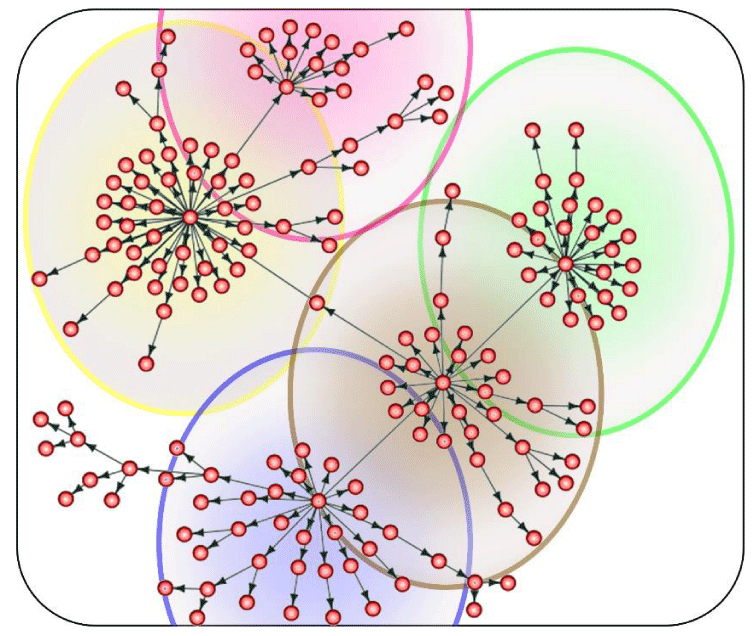

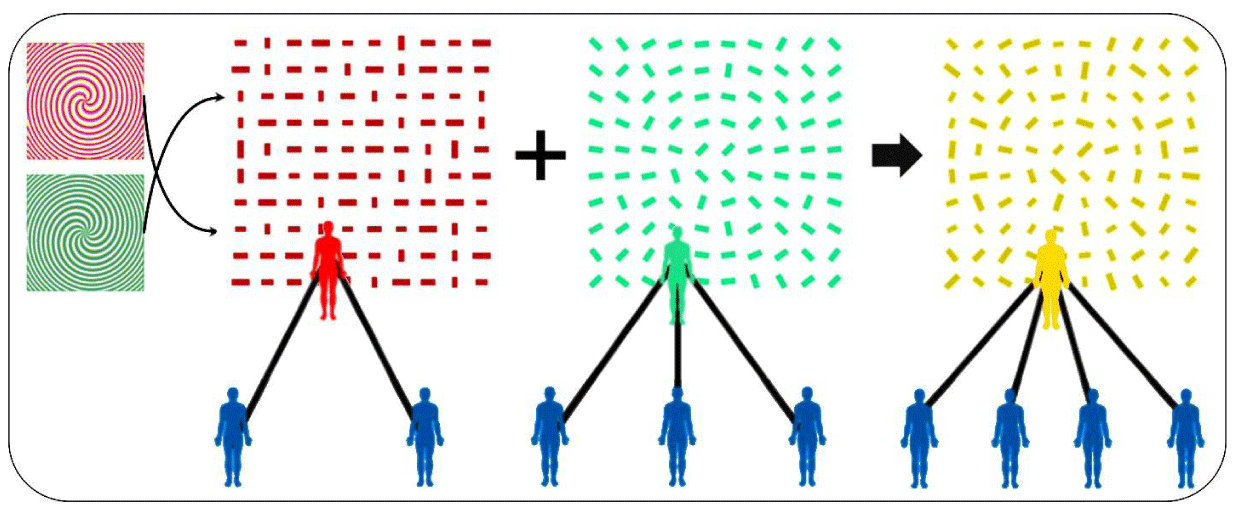
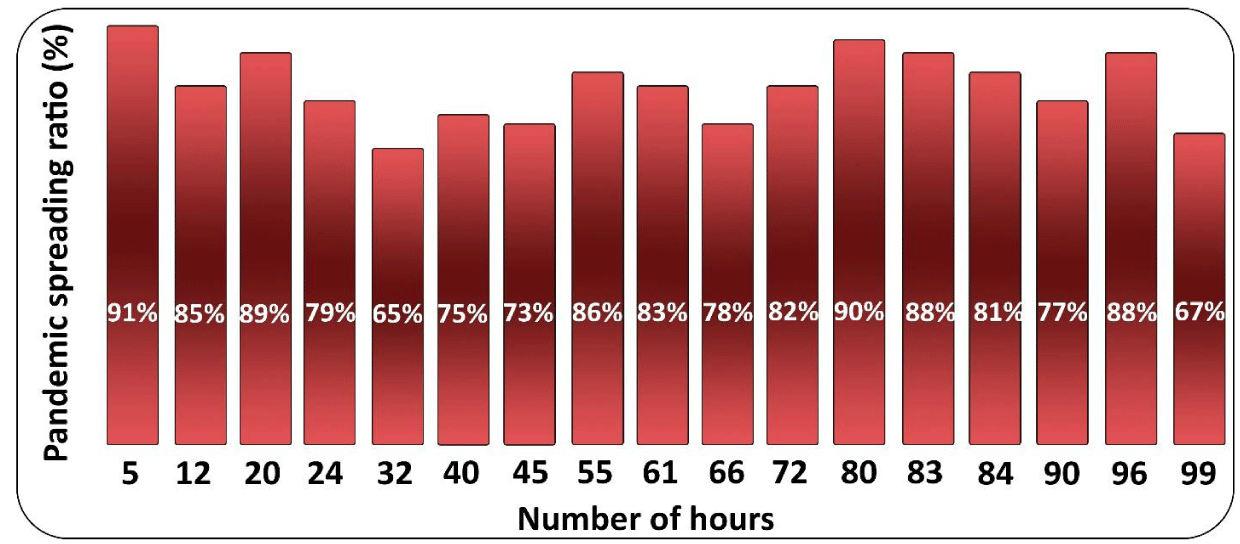
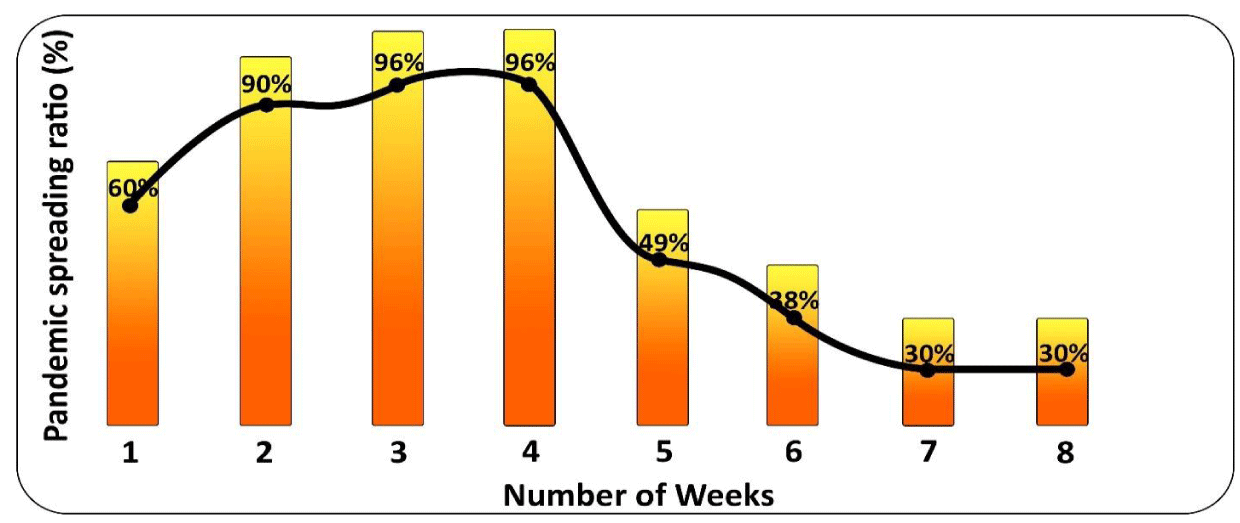
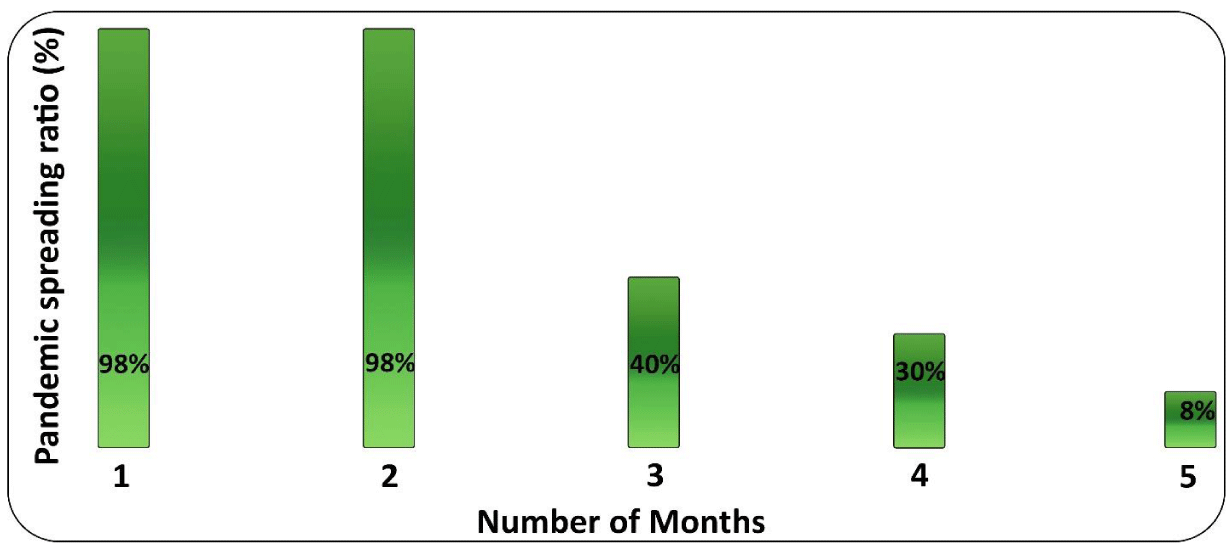

 Save to Mendeley
Save to Mendeley
